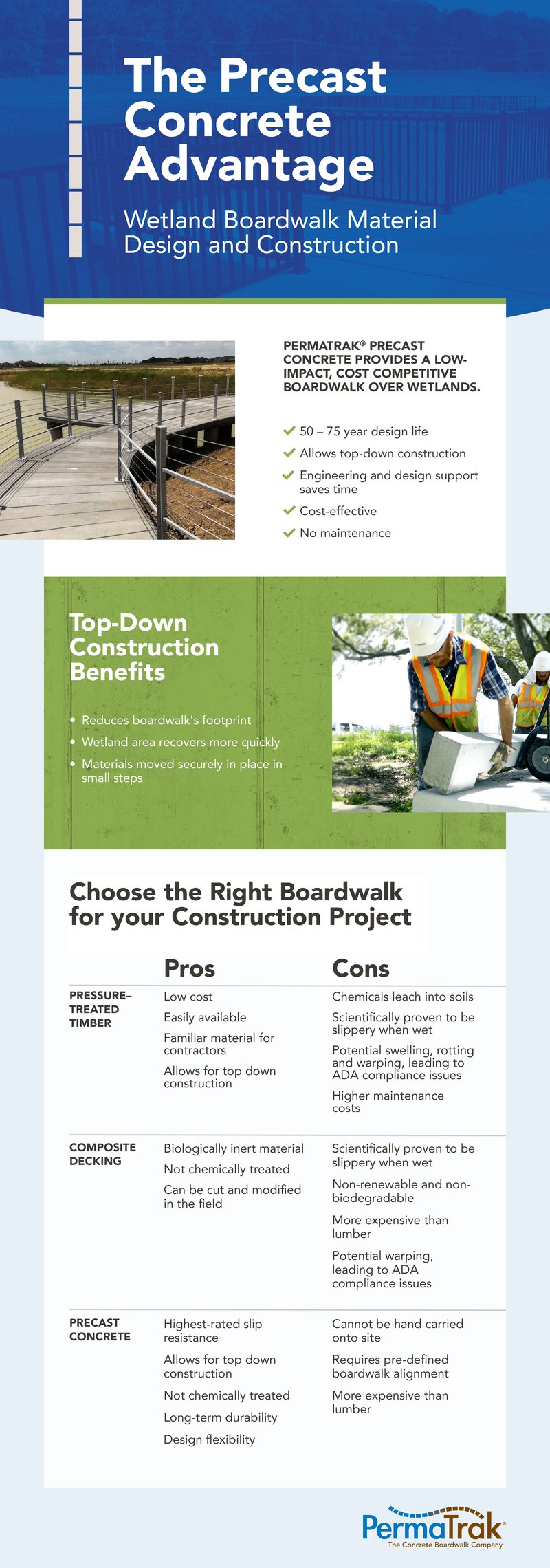Comparing Pressure-Treated Timber, Composite and Concrete Boardwalks in Wetland Areas
Wetlands contain valuable and delicate ecosystems that must be preserved. Any boardwalk or pedestrian bridge built over a wetland must leave a minimal impact on the environment, no matter which material is specified. If possible, using top-down construction in a wetland area can have several benefits, numbered 1-3 below.
You'll also find a pros and cons list comparing different boardwalk decking materials that can be used in a wetland area. Keep in mind, these bullet points are geared towards commercial boardwalk or pedestrian bridge projects through wetland areas, not residential applications.
PermaTrak offers a cost-effective, maintenance free solution to designing and constructing boardwalks in wetland areas, with a low-impact on the surrounding environment. Below is a simple graphic to explain the benefits of designing and specifying a concrete boardwalk through sensitive wetland areas.

Compared with pressure-treated timber and composite decking, PermaTrak's precast concrete boardwalk product offers:
Less harm to the wetland area itself
- Top down construction is an effective way to minimize the impact to wetlands during the boardwalk construction phase. During top down construction, the equipment is incrementally driven on top of the boardwalk, alleviating harm to the wetland area and allowing the area to recover more quickly.
- Precast concrete also doesn't contain chemical additives, stains or sealants. With no chemical products used to maintain the precast concrete, there is no long-term chemical damage (leaching or seepage) on the wetlands environment.
A more cost-effective product
- The start-up costs for the PermaTrak precast concrete material are generally higher than pressure-treated timber and composite decking, but a concrete boardwalk system is more cost-effective over the lifespan of the product. This is a result of the 50-75 year design life, lack of required maintenance, and other factors.
No required maintenance
- Unlike pressure-treated timber, precast concrete will not rot, warp, or twist, resulting in having to replace boards frequently. Precast concrete also does not foster growth of mold or algae like pressure-treated timber and composite decking.


